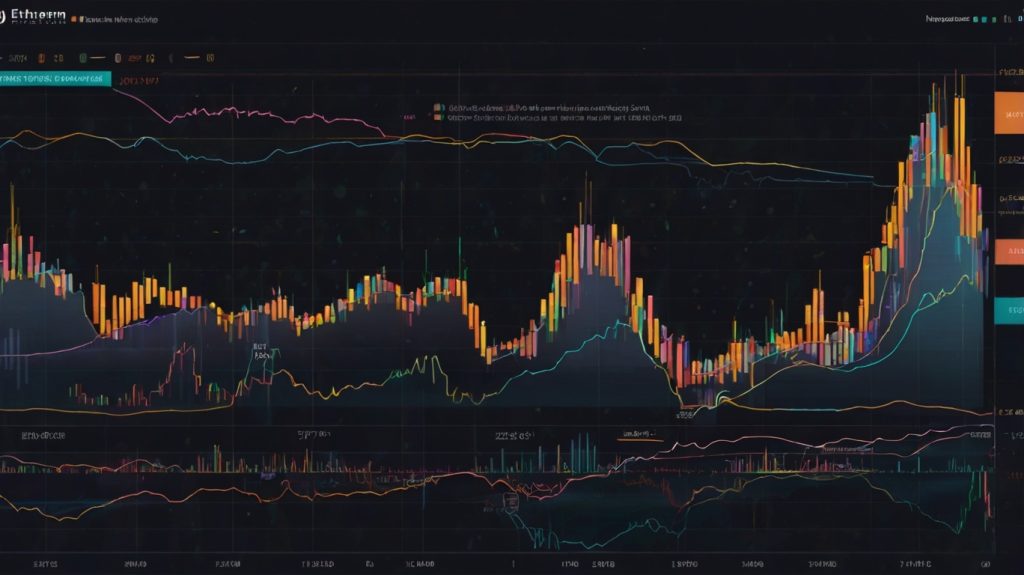Introduction
Ethereum, the world’s second-largest cryptocurrency by market capitalization, has always been a significant player in the crypto space. With its revolutionary blockchain technology and vast potential for decentralized applications (DApps), Ethereum has garnered attention not just as a cryptocurrency but as a foundational technology for the future of the internet. Understanding the factors that drive Ethereum’s price is crucial for investors, traders, and enthusiasts alike. In this article, we will dive deep into the factors that influence ETH’s price, analyze recent trends, and provide insights into its future potential.
What is Ethereum?

Brief History of Ethereum
Ethereum was conceptualized by Vitalik Buterin in late 2013 and officially launched in July 2015. Unlike Bitcoin, which was designed solely as a digital currency, Ethereum was created as a decentralized platform that allows developers to build and deploy smart contracts and decentralized applications. This has made Ethereum a critical part of the blockchain ecosystem, with its native currency, Ether (ETH), serving as the fuel for the network.
How Ethereum Differs from Bitcoin
While Bitcoin is often referred to as “digital gold,” Ethereum is better described as “digital oil.” Bitcoin’s primary function is to act as a store of value, whereas Ethereum serves as a platform for decentralized applications, enabling a vast range of use cases from finance to gaming. This difference in functionality is reflected in their market dynamics and, consequently, in their price movements.
The Factors Influencing ETH Price
Market Demand and Supply
Demand-Supply Dynamics in the Crypto Market
Like any asset, Ethereum’s price is influenced by the basic economic principle of demand and supply. When demand for ETH increases, either due to heightened interest in decentralized applications or speculation, the price tends to rise. Conversely, when the supply outpaces demand, prices may fall. The limited supply of ETH, with a yearly issuance rate, also plays a significant role in its price stability.
Technological Developments

Ethereum 2.0 and Its Impact
One of the most anticipated developments in the Ethereum ecosystem is Ethereum 2.0, an upgrade that aims to improve the scalability, security, and sustainability of the network. The transition from a proof-of-work (PoW) to a proof-of-stake (PoS) consensus mechanism is expected to reduce energy consumption and enhance transaction speeds, which could potentially drive up the price of ETH as more users and developers flock to the improved platform.
Market Sentiment
The Role of News and Events
Market sentiment, driven by news, social media, and influential figures in the crypto space, can have a profound impact on ETH’s price. Positive news, such as successful technological upgrades or major partnerships, can lead to bullish sentiment and drive up prices. On the other hand, negative news, such as regulatory crackdowns or technical issues, can cause prices to drop rapidly.
Regulatory Environment
Global Regulatory Trends
Cryptocurrencies operate in a regulatory grey area in many parts of the world. Changes in the regulatory landscape can have a significant impact on the price of ETH. For instance, favorable regulations that promote the use of blockchain technology can lead to increased adoption and higher prices. Conversely, stringent regulations or outright bans can suppress demand and lead to price declines.
Recent Price Trends of Ethereum

Year-to-Date Analysis
In 2024, Ethereum has seen a rollercoaster ride in terms of price. Starting the year strong, ETH experienced significant volatility due to various market events, including the broader crypto market corrections and geopolitical factors. Analyzing the year-to-date price trends helps in understanding the short-term movements and predicting future trends.
Historical Price Movements
Key Highs and Lows
Ethereum’s price history is marked by several key highs and lows. For instance, the all-time high of over $4,800 in November 2021 was driven by the hype surrounding decentralized finance (DeFi) and non-fungible tokens (NFTs). Conversely, significant corrections have occurred due to market-wide sell-offs, regulatory concerns, and macroeconomic factors. Understanding these historical price movements is crucial for anyone looking to invest in ETH.
Technical Analysis of ETH
Key Indicators
Moving Averages
Moving averages (MA) are one of the most widely used indicators in technical analysis. They help smooth out price data to identify trends. For Ethereum, the 50-day and 200-day moving averages are often used to determine bullish or bearish trends. A “golden cross,” where the 50-day MA crosses above the 200-day MA, is typically seen as a bullish signal.
Relative Strength Index (RSI)
The Relative Strength Index (RSI) measures the speed and change of price movements. An RSI above 70 indicates that ETH might be overbought, while an RSI below 30 suggests that it might be oversold. Traders often use RSI to identify potential reversal points in ETH’s price.
Chart Patterns

Support and Resistance Levels
Support and resistance levels are critical in determining potential entry and exit points. Support levels indicate where the price of ETH has historically had difficulty falling below, while resistance levels indicate where it has had difficulty rising above. Identifying these levels can help traders make informed decisions.
Fundamental Analysis of Ethereum
Ethereum’s Use Cases
Smart Contracts and DApps
Ethereum’s ability to host smart contracts and decentralized applications is one of its strongest fundamentals. These use cases drive demand for ETH, as it is required to execute transactions and run applications on the network. The growth of decentralized finance (DeFi) and non-fungible tokens (NFTs) further fuels this demand.
Developer Activity
GitHub Commits and Innovations
Developer activity is often seen as a leading indicator of a cryptocurrency’s future success. High levels of activity on Ethereum’s GitHub repository suggest ongoing improvements and innovations, which can positively impact ETH’s price. A vibrant developer community ensures that the Ethereum network continues to evolve and address any emerging challenges.
Future Predictions for ETH Price
Expert Opinions
Bullish vs. Bearish Views
Market experts are divided on the future of ETH. Some believe that the continued growth of DeFi, NFTs, and the upcoming Ethereum 2.0 upgrade could propel ETH to new heights. Others caution that regulatory risks and potential competition from other blockchains could limit its upside.
Potential Catalysts
Technological Advancements and Partnerships
Technological advancements, such as Layer 2 scaling solutions, and strategic partnerships with major corporations could serve as significant catalysts for ETH’s price. These developments could lead to increased adoption and, consequently, a higher price.
Risks Associated with ETH Investment
Volatility
Market Swings
Cryptocurrencies, including Ethereum, are known for their extreme volatility. Prices can swing wildly in short periods, leading to significant gains or losses. This volatility is often driven by speculative trading, making ETH a high-risk investment.
Regulatory Risks
Government Actions and Policies
As governments around the world grapple with how to regulate cryptocurrencies, the uncertainty in the regulatory environment poses a risk to ETH investors. Harsh regulations or outright bans in key markets could negatively impact the price of Ethereum.
Conclusion
Ethereum remains a powerhouse in the cryptocurrency world, with a strong community, innovative technology, and a wide range of use cases. While the price of ETH is influenced by various factors, including market demand, technological developments, and regulatory changes, its future remains bright. Investors should keep a close eye on both technical and fundamental indicators to navigate the volatile crypto market.
You are Invited To Read this article:
FAQs
Is Ethereum a Good Investment?
Ethereum is considered a good investment by many due to its strong use cases, active development community, and potential for future growth. However, it is also a highly volatile asset, so investors should be prepared for significant price swings.
What Are the Risks of Investing in ETH?
The main risks include market volatility, regulatory uncertainty, and potential competition from other blockchains. Investors should conduct thorough research and consider these factors before investing.
How Does Ethereum Compare to Bitcoin?
While Bitcoin is primarily a store of value, Ethereum is a platform for decentralized applications. This difference gives Ethereum a broader range of use cases but also introduces additional complexities and risks.
What Could Drive ETH Prices Higher?
Technological advancements, increased adoption of decentralized applications, and favorable regulatory developments could drive ETH prices higher.
Should I Buy ETH Now?
The decision to buy ETH should be based on your investment goals, risk tolerance, and market analysis. Consulting with a financial advisor and staying informed about the latest market trends can help you make an informed decision.

.jpg
)
1 thought on “Eth Price Up Analysis: Comprehensive Guide to Understanding Ethereum’s Market Movement”